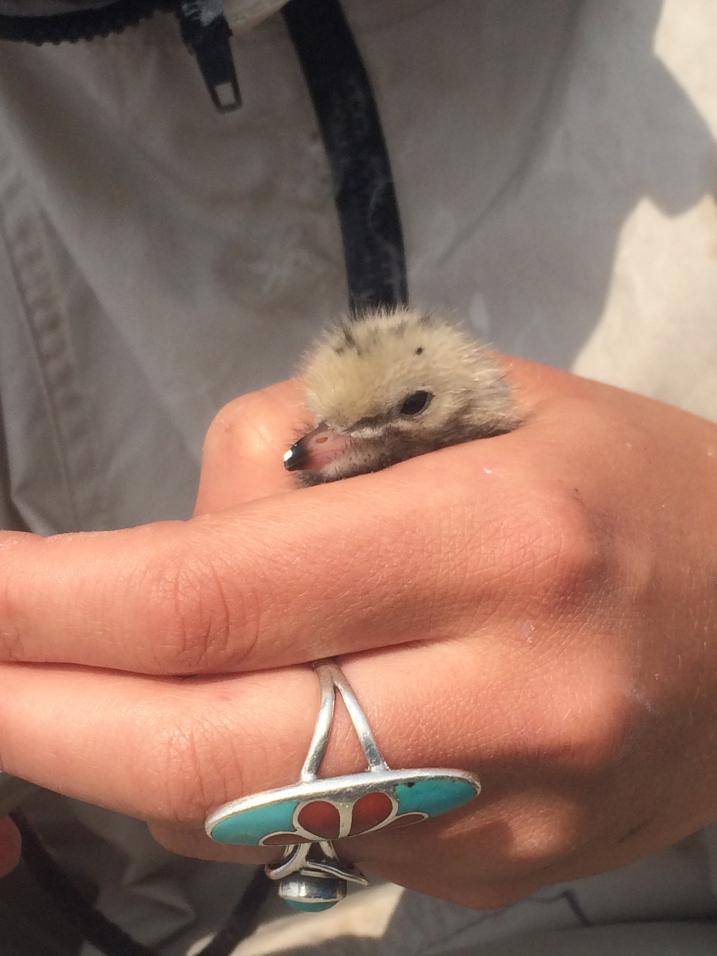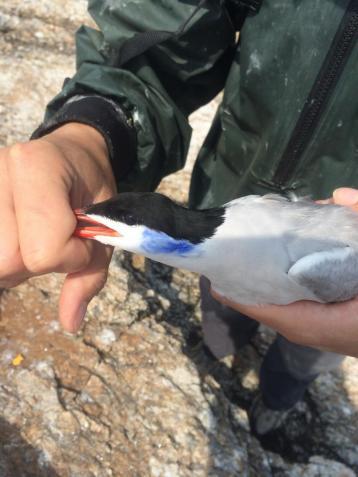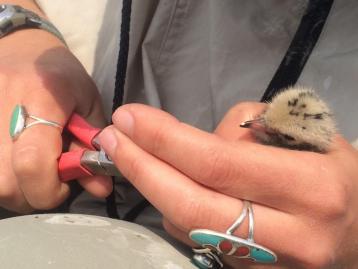For the Birds

I spent a week in mid-June on a project with the UNH Cooperative Extension and NH Sea Grant on the Isles of Shoals with Erik Chapman, Extension faculty in fisheries, and his advisee Jessica Carloni, a master’s student in the Department of Natural Resources at the University of New Hampshire. Jessica’s project, the New Hampshire Regional Tern Research and Conservation Initiative, funded by NH Fish and Game, is currently researching flight and migration patterns in common terns on White and Seavey Islands.

The very first thing that happened when I arrived on White Island was a slight modification to the ball cap I was wearing; socks were immediately balled and duct taped to my head. I was definitely grateful for the extra padding as the terns, within seconds, began dive-bombing us and squawking in our faces.
White and Seavey Islands, joined together at low tide, are home to a protected common tern colony. Common terns are threatened in New Hampshire, and a program has been in place through the Shoals Marine Laboratory since 1997 to restore the colony on the islands.
In order to gather data on flight patterns for her research, Jessica attached GPS transmitters to adult terns. GPS is a relatively new technology for seabirds as small as terns, so Jessica is piloting methods to attach the transmitters to the birds.
A trap was used to catch terns from marked nests around Seavey Island. Once caught, the bird was measured, weighed, and banded. The GPS was attached to the bird’s back using Teflon tape and super glue. Finally, the tern was marked on the cheeks with an identifying color.
The released tern’s GPS gathers data for about 24 hours. It is then recaptured and the GPS is removed. Two birds have returned interesting data on flight patterns-- one flying around the island and the other off to sea for fishing.
Terns, however, incessantly preen. Because of this, four birds picked off their transmitters before they were retrieved. Jessica is currently working on a modified attachment method before continuing to tag more terns.
Also while on the islands, we helped with Shoals Marine Laboratory tern research. We performed a productivity census— essentially a giant Easter egg hunt that honeycombed the entire two islands to count tern eggs. I also assisted in banding hatched common and roseate tern chicks and spent hours in the blinds observing colony behavior.
I learned so much while on the islands in terms of research and data collection methods, tern habits and dispositions, and endangered species conservation. The Isles of Shoals was a beautiful place to spend a week “working”—if you could call it working at all!
In July, I will be working with the New Castle Conservation Commission and the UNH Office of Woodlands and Natural Areas. Stay tuned for updates!



